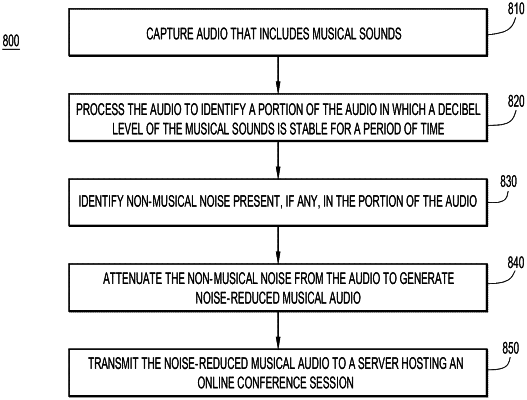| CPC G10K 11/17885 (2018.01) [G06N 20/00 (2019.01); H04L 12/1822 (2013.01)] | 17 Claims |

|
1. A method comprising:
obtaining audio data from an endpoint participating in an online conference session, the audio data representing audio captured at the endpoint;
providing information that causes display of a user interface that allows an online conference session participant associated with the endpoint to select a type of noise reduction to be applied to the audio data;
obtaining an indication, from the online conference session participant via the user interface, of a user selection that a first type of noise reduction is to be applied to the audio data obtained from the endpoint;
in response to obtaining the indication of the user selection that the first type of noise reduction is to be applied, analyzing sounds in the audio data to identify at least two classified sounds;
identifying a first classified sound, of the at least two classified sounds, that is an allowed sound, wherein audio information, transmitted to a remote endpoint participating in the online conference session, includes the first classified sound;
identifying a second classified sound, of the at least two classified sounds, that is not the allowed sound, wherein the second classified sound is attenuated in the audio information; and
based on the identification of the second classified sound, providing second information that causes display of a prompt asking a user whether to change to a different type of noise reduction.
|